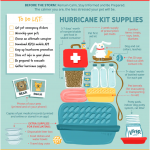
Many times, we are not expecting to add a new cat to the family and sometimes we are. Sometimes, it is love at first site when we lock eyes during an adoption event at a local pet store or shelter. And other times, they wander onto our doorstep and choose us to be their new family. Introducing a new cat to the home can be a lot easier with a little planning and preparation. It is important to have everything you need ahead of time. Make sure that you have appropriate toys, scratching post/objects, litter and litterboxes, preventatives, food, etc. The following steps will help make the adjustment go a lot smoother.
It is important for cats to have some type of carrier to transport them to their new home and to and from veterinary visits. A cat can be easily startled and jump from your arms or struggle to get away. The last thing you want is for your new cat to get loose in the parking lot or near a busy street. Have a soft crate pad or towel lining the carrier. You can sprinkle catnip or treats as well as spritz Feli-way calming pheromone on the towel to make the carrier more inviting. Have another blanket or towel to drape over the top and sides of the carrier when traveling in the car can make them feel safer and less stressed by everything whizzing past their view. You can also spray Feli-way or Catnip spray on this towel as well. Also, now that it is summer, it is Hurricane Season! Already having a pet carrier that your cat is familiar with will make emergency evacuations less stressful. In a separate blog, we will discuss how to familiarize your cat to the carrier and going to and from the vet.
Already having the items at home and set up will also make it easier for your new cat to get acclimated versus adding new elements multiple times to the new home for the new cat. If there are other pets in the household, introductions should also be made gradually and never forced. Pets get many of their social cues from smells. When possible, bring home a baby blanket or towel that has the new cat’s scent on it for your pets to get used to and vice versa for the new cat to get used your existing pets. New pets should be kept separate from existing pets for at least 1 week when possible as it is possible for them to have been exposed to upper respiratory pathogens when at the shelters and rescues. It is important to have hiding spots at different heights in the home as this helps them feel safe and provide them with areas that they can escape to when they feel threatened. Multi-level cat trees with cubbies are great safe spots.
If you plan on maintaining your new cat on a different food than what was provided at the shelter/adoption facility, then make sure to have enough of the previous diet (at least 3-4 days worth) so that you can gradually mix in the new food in order to avoid digestive upset. Food and water bowls should be kept in low traffic areas of the home especially for a new cat who maybe nervous. Busy areas may discourage them visiting their food and water station. The same is true for litterboxes. You should have 1 more litterbox than the number of cats you have. So, in a 1-cat household, you should have 2 litterboxes; and in a 3-cat household, you should have 4 litterboxes. Having resources spread out over different areas will help reduce stressful interactions among pets. Since there are many good quality diets available, interpreting labels and marketing can be confusing. Consult with your veterinarian if you have questions.

Your cat should also have some form of identification should he/she ever get loose or lost. A collar with a tag is fine. However, many cat collars are “break-away” collars, meaning should the collar get caught on anything, it will “break-away” from the cat when it tugs/pulls itself free. A microchip is a permanent form of identification. It is placed under the skin, often at the time they are spayed or neutered, with a unique number associated with it when read using a special scanner. This number is then used to look up the owner’s information. It is important that if your cat was implanted with a microchip prior to adoption that either the adoption group/rescue register the cat with your current information, or they provide you with the information necessary to register your information with the microchip company. Once updated, only the owner listed will be able to update or change the information. It is important to contact the microchip company when you have a change in contact phone number or address.





